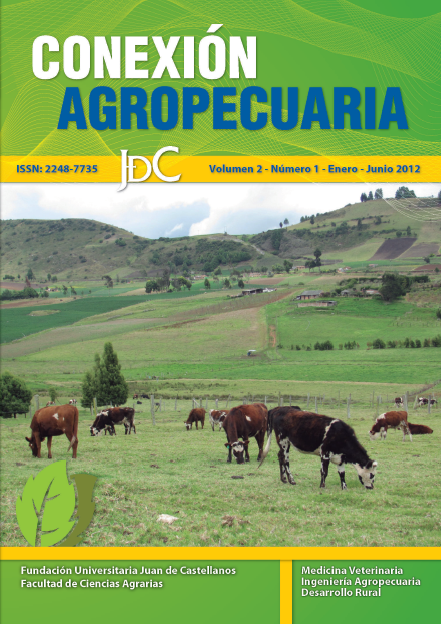Keywords:
bioethics, illegal trade, conflict, ethics, wildlifeAbstract
This study re analyzes the participation of bioethical issues involved in the conflicts that come out from the relationship between humans and wildlife, as a consequence of the smuggling in Colombia. This proposal of theoretical approach characterizes the trade of wildlife in the country. It also describes and analyzes some of the problems associated with this activity. The results showed that there is a lack of knowledge regarding ecosystem elements as well as the existing legislation in this matter. This causes an inappropriate use of the biotic resources. This study also found that the trade of goods from wildlife derived resources can contribute to have a more sustainable environment and to improve the living conditions of the communities involved. To obtain these benefits, it is necessary to develop strategies where the different participants get together and come out with an educational and joint plan that targets preventive measures.It is further proposed that the humanity is directly responsible for safeguarding and the proper use of wildlife, thus, ethical responsibility and authority in this regard should be shared by the human groups affected, as wells as the governmental institutions. This attitude aims to harmonize the conflictive relationship between humans and the biological resources, since this may be the only way to maintain ecosystemic balance and thereby protect the human communities associated. This approach will lead to the preservation of diversity not only in biological but also in cultural terms. Finally, we propose that an ethical intervention of current and future professionals is required, so they can make joint decisions in which the nonhuman world is also considered.
Downloads
References
Asociación Defensora de Animales y del Ambiente - ADA. 2000. Ley 611 de agosto de 2000. Septiembre 2011. http://faunacolombia.org/legislacion/l611_00.pdf
Baptiste L.G., Hernández S., Polanco R. y M. Quiceno. (2002). La fauna silvestre colombiana: una historia económica y social de un proceso de marginalización. En: Rostros culturales de la fauna. Las relaciones entre los humanos y los animales en el contexto colombiano. Instituto Colombiano de Antropología e Historia. Bogotá. 343 pp.
Cely M. (2012). Estadísticas del uso ilegal de fauna silvestre en Colombia. Ministerio del Medio Ambiente. Dirección general de ecosistemas. Grupo de biodiversidad. Colombia. http://www.minambiente.gov.co/documentos/474_estadisticas_trafico.pdf
Comisión para la Cooperación Ambiental - CCA. (2005). El comercio ilegal de flora y fauna silvestres. Canadá. Octubre 2011. http://www.cec.org
Complejidad, Diálogo de Saberes, Nuevo Pensamiento y Racionalidad Ambiental. Congreso de Educación Ambiental de la Región. GALANO, Carlos. Disponible en: http://www.biodiversidadla.org/content/view/full/16018. Fecha de consulta: 09 de febrero de 2011.
Corporación Raya. (2007). Fauna silvestre. http://www.corporacionraya.org/tematica/faunasilvestre
Couceiro, A. (2005). Bioética, ecología y solidaridad en América Latina. En: Bioética y medio ambiente. Colección Bios y Ethos 12. Universidad El Bosque. 2ª ed. Bogotá, D.C. Kimpress Ltda. pp. 189-208.
Escobar, J. (2003). Consideraciones bioéticas acerca de la fumigación de cultivos ilícitos. En: Bioética, ciencia, tecnología y sociedad (CTS). Colección Bios y Ethos20. Universidad El Bosque. Bogotá, D.C. Kimpress Ltda. pp. 107-139.
García H. (2007). Tráfico de especies silvestres. Octubre 2011. http://www.produccion-animal.com.ar
Garzón, F. (1997). El utilitarismo de Peter Singer y la pregunta por los animales. En: Problemas de Ética Aplicada. Colección Bios y Ethos. Ediciones El Bosque. Bogotá. Colombia.
Herrera A. (2010). El tráfico de fauna silvestre: una tragedia ignorada por la mayoría. Bogotá. Septiembre 2011. http://www.animanaturalis.org/p/1389/el_tr_fico_de_fauna_silvestre_una_tragedia_ignorada_por_la_mayoría
Hottois, G. (2006). Panorama crítico de las éticas del mundo viviente. Traducción Chantal Aristizábal. Revista Colombiana de Bioética. Departamento de Bioética. Universidad El Bosque. 1(1): 35-62.
Humane Society International. (2009). Manteniendo silvestres a los animales: bienestar animal para la biodiversidad y sostenibilidad ambiental. En línea: http://media.animalsmatter.org/resources/casestudies/es/CaseStudy-HSIUDAW-Wildlife-ES.pdf
Kottow, M. (2009). Bioética ecológica. Colección Bios y Oikos 5. Universidad El Bosque. Bogotá, D.C. Kimpress Ltda. 226p.
Maldonado R. (2007). La educación ambiental no formal e informal como instrumento de gestión contra el tráfico ilegal de fauna silvestre en el Municipio de Villavicencio Meta. Maestría en Gestión Ambiental. Facultad de Estudios Ambientales y Rurales. UPTC. Bogotá. http://www.cormacarena.gov.co/paginaant/www/Biblioteca%20Ambiental/Trafico%20ilegal%20de%20Fauna%20-%20Trabajo%20de%20Grado.pdf
Maliandi, R y O. Thüer. (2008). Teoría y praxis de los principios bioéticos. Buenos Aires: Ediciones de la UNLa. 312p.
Mancera, N. y G. Reyes. (2000). Comercio de fauna silvestre en Colombia. Septiembre 2011 http://www.agro.unalmed.edu.co/publicaciones/revista/docs/Comerciodefaunasilvestre.pdf
Martínez C. (2000). La bioética frente a la fauna silvestre. Primer Seminario Regional sobre Bienestar de Animales Silvestres y Domésticos. Ibagué. Septiembre 2011. http://carlosmartinez.blogspot.es/img/BIOETICAYFAUNA.PDF
Ministerio del Medio Ambiente. (2002). Estrategia nacional para la prevención y el control del tráfico ilegal de especies silvestres. Septiembre 2011. http://www.humboldt.org.co/iavh/documentos/politica/politicas_ambientales/2002%20Estrategia%20Control%20Trafico%20Ilegal%20de%20Especies.pdf
Moreno E. y F. Wilson. (2009). Tráfico de fauna silvestre. Memorias del Primer Congreso y Cuarto Foro ACOPAZOA. Tocancipá, Colombia.
Ojasti J. (2000). Manejo de fauna silvestre neotropical.
Sarmiento, L. (2011). Instituto de Investigación de Recursos Biológicos. Colombia. WSPA Suramérica. Septiembre 2011. http://www.humboldt.org.co/iavh/component/k2/item/304-esta-semana-selanza-campa%C3%B1a-contra-el-tr%C3%A1fico-de-animales-silvestres
Singer, P. (1995). Compendio de Ética. Alianza Editorial, S.A. Madrid.
Singer P. (1998). Liberación animal. Tercera edición. Editorial Trotta. Oxford. Inglaterra. 334p.
Southgate, C. (2002). Introduction to environmental ethics. En: Bioethics for Scientists. John Wiley & Sons Ltd ISBNs: 0-471-49532-8 (Hardback); 0-470-84659-3 (Electronic) 360p.





